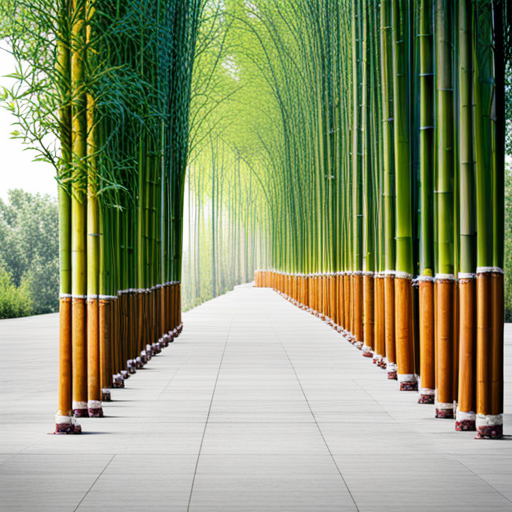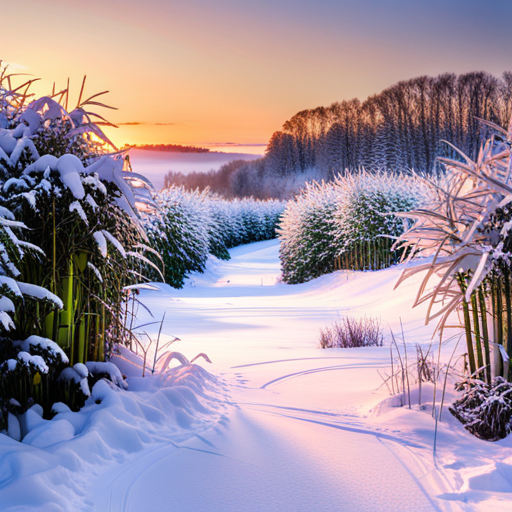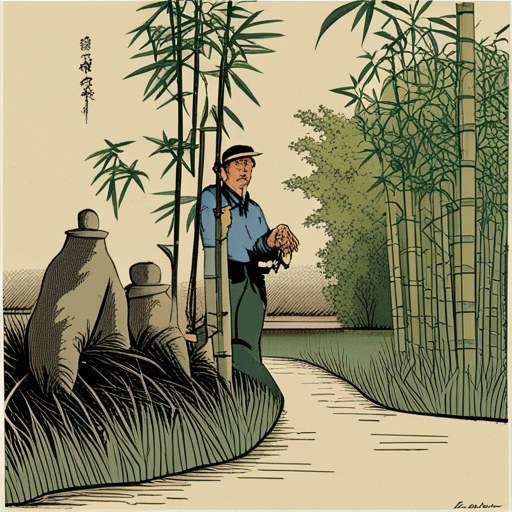Bamboo can be successfully cultivated in Minnesota gardens, provided that cold-hardy varieties are chosen to withstand the harsh winter conditions. With USDA plant hardiness zones ranging from 3a to 5a, it may be necessary to grow bamboo in containers and move them indoors during the winter months in zones 3a and 3b.
For zone 4, Phyllostachys nuda, also known as Snow Bamboo, is highly recommended due to its exceptional cold tolerance and ability to reach heights of up to 10 feet in zone 5. Other suitable options for zone 4 include Phyllostachys Aureosulcata ‘Yellow Groove’ and Phyllostachys Bissetii, the latter being particularly resilient and ideal for privacy screens.
Proper care for bamboo entails selecting a protected location, regular watering, application of mulch in winter, and protection from winter winds. It is also vital to contain bamboo using a root barrier or regular root pruning.
However, it is crucial to avoid planting Japanese knotweed, an invasive and prohibited species in Minnesota that can cause harm to wildlife and urban areas. For guidance on managing Japanese knotweed, it is advisable to seek advice from local authorities or experts.
Contents
- 1 Our Highlighted Points
- 2 Top Bamboo Choices
- 3 Winter Care Tips
- 4 Dealing with Japanese Knotweed
- 5 How Can Hardy Bamboo Varieties Benefit Minnesota Gardens?
- 6 Frequently Asked Questions
- 6.1 Can bamboo be grown in Minnesota’s harsh winters?
- 6.2 How do I choose the right bamboo variety for Zone 4 in Minnesota?
- 6.3 What are the specific care instructions for bamboo in Minnesota’s summer months?
- 6.4 How can I protect container bamboo from freezing during winter?
- 6.5 What should I do if I suspect I have Japanese knotweed in my garden?
Our Highlighted Points
- Phyllostachys nuda (Snow Bamboo) is a cold hardy bamboo species that is suitable for Zone 4 and can reach up to 10 feet in Zone 5.
- Phyllostachys Aureosulcata ‘Yellow Groove’ and Phyllostachys Bissetii are also hardy bamboo varieties for Zone 4, with the latter being resilient and good for privacy screens.
- Phyllostachys heteroclada ‘Purpurata’ thrives in wet conditions and can be a suitable choice for certain areas.
– It is important to protect bamboo from winter winds, avoid breaking ice off branches, and provide winter insulation for container bamboo to prevent freezing.
Top Bamboo Choices

In Minnesota, for gardeners seeking cold hardy bamboo varieties, suitable choices include Phyllostachys nuda, Phyllostachys Aureosulcata ‘Yellow Groove’, and Phyllostachys Bissetii, all of which can withstand the harsh winters in USDA plant hardiness zones 3a through 5a.
Phyllostachys nuda, also known as Snow Bamboo, is incredibly cold hardy and can reach up to 10 feet in Zone 5.
Phyllostachys Aureosulcata ‘Yellow Groove’ and Phyllostachys Bissetii are both suitable for Zone 4, with the latter being resilient and good for privacy screens.
Additionally, Phyllostachys heteroclada ‘Purpurata’ thrives in wet conditions.
These varieties provide gardeners with options for creating privacy screens and adding visual interest to their gardens, while still being able to withstand the challenging weather conditions in Minnesota.
Winter Care Tips

During the winter months, proper care should be taken to protect the bamboo plants in Minnesota gardens, ensuring their survival and health.
Mulching techniques play a crucial role in protecting bamboo from the harsh winter conditions. Applying a generous layer of mulch around the base of the bamboo plants helps insulate the roots, keeping them warm and protected from freezing temperatures. Additionally, mulch acts as a barrier against fluctuating temperatures and helps retain moisture in the soil, preventing dehydration of the plants. It is important to choose organic mulch materials such as wood chips or straw and apply them in a thick layer of about 4 to 6 inches.
Furthermore, protecting bamboo from winter winds is essential. Creating windbreaks using fences, shrubs, or other structures can shield bamboo plants from strong gusts, preventing damage to their delicate foliage and stems.
By implementing these winter care tips, bamboo plants in Minnesota gardens can thrive and withstand the challenges posed by the harsh winter climate.
Dealing with Japanese Knotweed

To effectively manage the invasive species Japanese knotweed, it is crucial to seek guidance from local authorities or experts due to its adaptability and fast spreading rhizome system.
Japanese knotweed is a prohibited and highly invasive species in Minnesota that can cause significant damage to wildlife and urban areas.
Eradicating Japanese knotweed can be challenging as it has a strong ability to adapt to different environments and spread rapidly through its rhizome system.
Prevention is key in stopping the spread of Japanese knotweed. It is important to identify and report any sightings of Japanese knotweed to the appropriate authorities.
Additionally, proper disposal of any plant materials or soil contaminated with Japanese knotweed is essential to prevent its further spread.
The expertise and guidance of local authorities or experts is necessary to effectively manage and eradicate Japanese knotweed.
You may also like to know the strategies for successful growth and establishment of bamboo in Zone 6 gardens.
How Can Hardy Bamboo Varieties Benefit Minnesota Gardens?
Hardy bamboo varieties bring native bamboo benefits and conservation possibilities to Minnesota gardens. These durable plants offer a range of advantages, including erosion control, windbreaks, and privacy screens. Additionally, their rapid growth and low maintenance requirements make them an excellent choice for gardeners in Minnesota’s diverse climates.
Frequently Asked Questions
Can bamboo be grown in Minnesota’s harsh winters?
Bamboo can be grown in Minnesota’s harsh winters, but it requires certain cold hardy species and proper winterization techniques. Some tips for winterizing bamboo include planting in containers, moving indoors, providing protection from winter winds, and using mulch for root insulation.
How do I choose the right bamboo variety for Zone 4 in Minnesota?
Choosing hardy bamboo varieties for Zone 4 in Minnesota requires considering cold tolerance. Phyllostachys nuda, Phyllostachys Aureosulcata ‘Yellow Groove’, and Phyllostachys Bissetii are suitable options. Additionally, factors such as resilience, privacy screening, wet conditions, and evergreen foliage should be taken into account.
What are the specific care instructions for bamboo in Minnesota’s summer months?
Bamboo in Minnesota’s summer months requires regular watering to ensure its health and growth. It is important to water deeply and consistently, providing enough moisture to penetrate the root system. Additionally, applying a balanced fertilizer specifically formulated for bamboo can promote optimal growth during the summer season.
How can I protect container bamboo from freezing during winter?
To protect container bamboo from freezing during winter, it is important to move the containers indoors or insulate them adequately. This can prevent the roots from freezing and damaging the plant. Insulation materials such as bubble wrap or blankets can be used for this purpose.
What should I do if I suspect I have Japanese knotweed in my garden?
If you suspect you have Japanese knotweed in your garden, it is important to identify it accurately. Contact local authorities or experts for assistance in confirming the presence of Japanese knotweed and for effective methods of removal.

